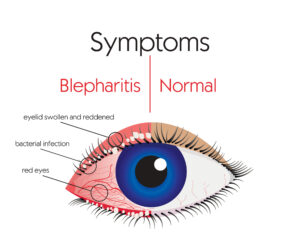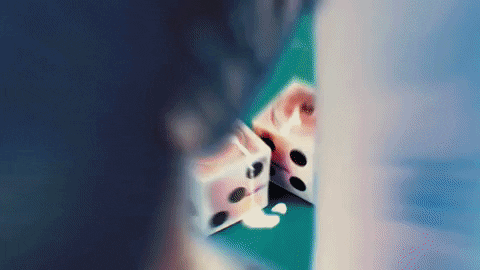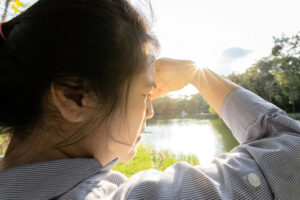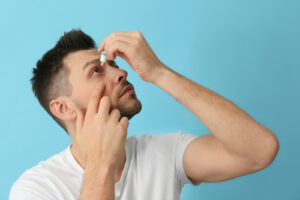Everyone’s eyes feel a little dried out sometimes. Dry climates and cool air can irritate your sinuses and your eyes, as can excess sunlight.
But sometimes, your environment isn’t always to blame. Your dry eyes can also be due to a chronic condition called dry eye syndrome, which is common in women and older adults.
Several factors can trigger dry eye syndrome and temporary dry eyes. For this reason, it may be challenging to pin down the underlying cause of your dry eyes and symptoms on your own.
If your eyes feel dried out, irritated, inflamed, or gritty, it may be time to see your eye doctor and discuss treatment. Only they can diagnose you and recommend the best way to treat and improve your symptoms.
When it comes to dry eye treatment, there are many options available. But it’s crucial to choose effective treatments that work.
Your eye doctor will recommend those that will make the most significant impact. You can complete some at home, but you may need to look further for the most effective results.
Keep reading to learn more about available dry eye treatments and find out what may be best for remedying your symptoms!
Lid Hygiene
Dry eye syndrome is often associated with eyelid inflammation, also called blepharitis. Blepharitis occurs when you have excess bacteria on your eyelids.
You can also develop blepharitis if the meibomian glands in your eyelids become clogged or irritated. These glands are what produce the oil film that surrounds your tears.

When these glands don’t function correctly, your tears lack this protective layer and evaporate too quickly. If your tears evaporate from the surface of your eye too quickly, it can make your eyes feel dry and uncomfortable.
Blepharitis can cause discomfort and irritation to the entire eye if left untreated. The best way to prevent and treat ongoing blepharitis is to keep your eyelids clean and free from foreign bacteria.
The simplest way to do this is by adopting a lid hygiene routine. Before starting any new lid hygiene routine, talk to your ophthalmologist.
They can recommend the best brands and how often to use lid wipes or a lid scrub. You can also consider using a warm compress on your eyelids to relieve symptoms and help break up clogged glands.
Artificial Tears
 Artificial tears, also called lubricating eye drops, can be bought over-the-counter at most drug stores. These eye drops are made from an ultra-hydrating formula for your eyes.
Artificial tears, also called lubricating eye drops, can be bought over-the-counter at most drug stores. These eye drops are made from an ultra-hydrating formula for your eyes.
With this formula, you can experience immediate relief from dry eye discomfort. You can usually use artificial tears regularly without any adverse effects, but on their own, they may not be enough to alleviate all your dry eye symptoms permanently.
Artificial tears can be a beneficial way of reducing dry eye symptoms without resorting to medications. They can also complement other dry eye treatments you may be taking or using.
Nutritional Supplements
A lot of nutrients and vitamins are vital for keeping your eyes healthy. One nutrient you’ve probably heard of that’s especially good for tear health is omega-3 fatty acids.
Omega-3 fatty acids encourage tear production and can help your eyes produce more lubricating tears. Nutrients are always more easily absorbed when consumed as food.

Getting more omega-3 fatty acids is best by incorporating them directly into your diet. Foods rich in omega-3 fatty acids include fish, walnuts, chia seeds, and flax seeds. But you can also take fish oil or flaxseed oil pills as a more convenient alternative.
Another vital part of your diet should be drinking plenty of water. Dehydration can trigger or exacerbate dry eye symptoms.
Staying hydrated is a critical part of treating ongoing dry eye. Drink water and electrolyte-containing fluids, especially when exercising or outside when temperatures climb during the spring and summer.
Limit Screen Time

You may know that blue light can cause eye strain. But overexposure to blue light may also make your eyes feel drier.
To combat this, do your best to limit screen time. If you know you must use screens, take regular breaks to keep your eyes feeling their best.
Try using something called the 20-20-20 rule for these situations. With the 20-20-20 rule, take a break from looking at the screen every 20 minutes to look at an object 20 feet away for 20 seconds.
This rule allows your eyes to refocus and reminds you to blink. When you’re looking at a screen, your blink rate significantly decreases.
Having a lower blink rate can lead to feelings of dry eye and other frustrating symptoms. These simple breaks are easy to implement during your work day and can save your eyes from too much blue light exposure.
Environmental Changes
Dry environments can trigger dry eyes or make existing symptoms worse. There are several ways to change your setting to prevent your eyes from becoming too dry.
A humidifier in your home or office can keep the air from getting too dry. You can also distance yourself from air vents when the AC is on and avoid sleeping with a fan pointed directly at you.

Sunlight can also harm your eyes whether or not you have dry eyes. Be sure to wear sunglasses when you’re outside.
You can also refrain from wearing contact lenses for relief as contacts can dry out your eyes further. Constantly wearing contact lenses can make your eyes feel dry, so give them a break and wear glasses when you can.
Professional Treatment

These various remedies and lifestyle changes are often all you’ll need if you experience dry eye symptoms. However, sometimes dry eye syndrome can be more persistent.
If you have dry eye symptoms that don’t seem to improve, it’s time to talk to your eye doctor. They can help guide your treatment and pinpoint the root of your symptoms.
At-home dry eye treatments may not be enough for everyone. Other treatments like prescription medication, light therapy, and even minor surgery may help you get the relief you need.
No matter how mild or severe your dry eye is, our team is here to help. Schedule an appointment at Omaha Eye & Laser Institute in Omaha, NE, to finally find the relief you need from your dry eye symptoms.


